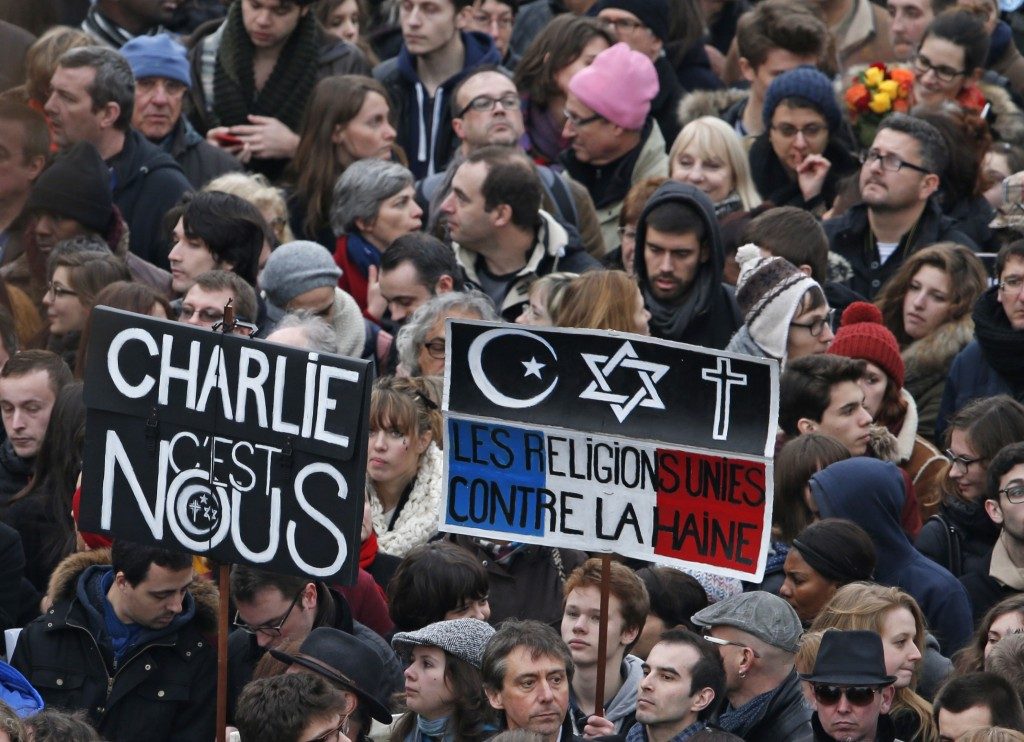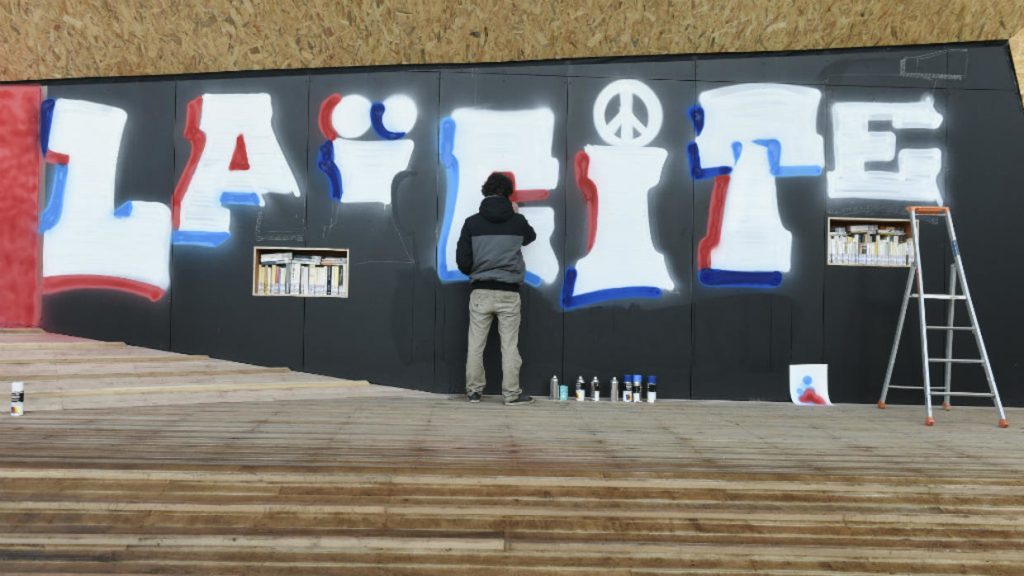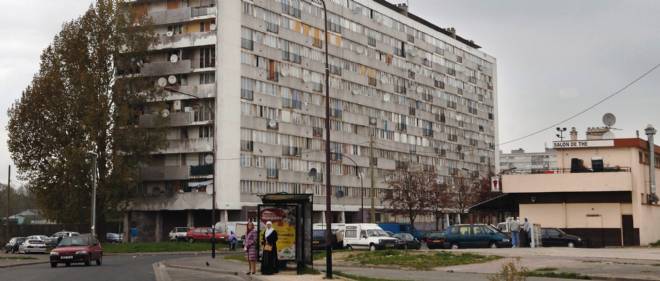Just as many historians will defend that history follows a cyclical pattern, an incisive investigation of modern day French politics will say that cultural tendencies recur throughout the advancement of French history. The recent “yellow vest” protesters recall the Revolution of 1789, in an attempt to overthrow an unpopular institution. The burning of Notre Dame, and the sums of donations that were given in its aftermath, is a reminder of the national symbol the Catholic cathedral represents. Modern day events manifest how ingrained these cultural trends are in French culture, forging a je ne sais quoi that many will recollect whenever France is brought up. Whereas a similar spirit of revolution and admiration of the past is implanted in French politics, so is France’s unique laïcité, or secularism. Instituted into French law in 1905, laïcité was meant to separate church and state, constructing a neutral state with freedom of religion. However, in 1905, the majority of the French population was alike; French and predominantly Christian. France’s modern day multiculturalism, heightened with the arrival of North African immigrants in the 1980s, evokes this pressing question: can laïcité be maintained in our multicultural world?
Laïcité is widely accepted among the French, possessing a place in French political culture. Meant to enstate a religious pluralism, in a multi-religious society, laïcité conversely comes off as an abandonment of religion to Muslims. Since France is a Catholic nation, it often seems Muslims have more to lose with laïcité. In September of 1989, two Creil girls refused to remove their headscarves, leading to their expulsion. Later, a 2004 law prohibited “religious symbols” in schools and public institutions. While many French citizens consider this 2004 law as simply an extension of laïcité, it is seen as discriminatory to Muslims.
When laïcité meant to enhance religious freedom through the withdrawal of religious affairs in public life, it deepens differences by prescribing individuals to one homogenous image. In reaction to an influx of immigrants that came in from North Africa in the 1980s, the government assumed that through a disregard of religious differences through laïcité, it would have to ideally establish equal treatment for all citizens. Schools were not directed to encourage the adoption of French values and identity, but rather history classes were reduced. Little was done for assimilation in the workforce and possible upward mobility in class for arriving immigrants since doing so would be “preferential treatment” to some citizens.
Contrary to its function, the 2004 law led to an increase in demand for Muslim schools rather than integration. Passivity from the government ushered a way for the extremist movements to uptake frustrated youths, unable to find a path within France. When teens in les banlieues refused to participate in the national minute of silence following the Charlie Hebdo shooting, the state decreed December 9th, the “Day of Laïcité” in public schools, commemorating when the law was signed. How can this constant interplay between citizens and government reap harmony as laïcité strives to construct?

Source: Reuters
Furthermore, idealized homogeneity does not adhere to multiculturalism. In modern politics, laïcité has become, through a force of political passion, a new fundamentalist definition of French identity that longs for a homogeneous France of the past. This view was popularized by France’s right winged National Front Party candidate, Marine Le Pen. Modern French philosopher, Alain Finkielkraut, called himself a “Francais de souche” or native born French, signifying a separation between French Muslims born of immigrant parents, and “native” French. Laïcité has become a cultural defense against differences so that it seems to overlook the reason it was instituted, to begin with: religious pluralism. By fixing the cultural identity surrounding laïcité, one that recalls an analogous France, it has lost its ideal of tolerance. As presented by French political scientist, Dominique Moisi, “Laïcité has become the first religion of the Republic.”
Startling many on the left, last December French President Emmanuel Macron announced a “national debate” in France: “to align the nation with its true identity,” concluding that France “must confront the question of immigration.” This past September, Macron stressed – in accord with the right winged discourse of the yellow vests and National Rally (previously known as the National Front Party) – that the urban and suburban bourgeoisie “don’t have a problem with immigrants because they never see them. The popular classes, however, live with it.” 63% of French citizens feel that there are too many immigrants in the country, whereas this percentage surges to 88% among the working class. In fact, France has more immigrants than any country of the European Union. This has given rise to the notion of a “France peripherique” to many French politicians in the far right, and now Macron; the idea that workers who live in suburban areas are more threatened by globalization. An investigation of laïcité, only displays part of the developing debate surrounding globalization and the working-class, immigration, and relations between France and North Africa, predominantly with Algeria – most immigrants in France are of North African and Middle Eastern descent. In accord with the “national debate” affirmed by Macron, he has argued that many are abusing the right of asylum stating, “France cannot host everyone if it wants to host people well.” Despite criticizing the strict immigration policies of Italy and Hungary, since 2015 France has granted asylum to only 33,000 people in 2018 – a quarter of all requests. In light of uprising populist sentiments French politicians have framed immigrants as the “other” who threatens the “national identity” of the Francais de souche.

Source: France 24
The creation of an “other,” based on origin, is a systematic stigmatization ingrained into French history and politics, best exemplified by the development of Paris: the marked differences between the luxurious Paris of touristic dreams and the “other” Paris – the outskirts that encircle it. These outskirts, or banlieues – the French word for suburbs – have developed a negative overtone in everyday speech, it has become an euphemism for the “other”: slums dominated by immigrants, breeding grounds for extremism, crimes, and unemployment. In the 1800s, the designs of Baron Haussman seeked to drive les classes dangereuses, or dangerous social classes, out of Central Paris to the north and northeast. In the 1960s, public housing projects, commonly referred to by the acronym HLM or Habitation à Loyer Modéré (Low Rent Housing) sprung up across the banlieues to lodge migrants, often middle class immigrants of North African or Middle Eastern descent. Yet, these government housing projects separated these people from Central Paris, creating a sense of a growing segregation by group identities, dubbed communautarisme by French politicians. Specific housing in these neighborhoods systematically trapped these people in cycles of poverty, since many jobs discriminate against those from les banlieues.
These alienated areas are stigmatized to be breeding grounds for terrorism and extremism. Yet, the exclusion of these areas is a problem that has been apparent for years. In the tradition of secularism – the French government can not even collect data of citizens’ race – the issue was largely ignored. Instead, in the 1980s, these areas were labeled les zones sensibles, or “sensitive urban zones,” essentially areas that required more government surveillance. Today, this “national identity crisis” can not be ignored in French discourse. Central Paris and les banlieues seemingly created two parallel worlds so disparate, it is impossible to ignore the divide between the Avenue des Champs-Elysees and the Le Corbusier HLMs of the outskirts.

Source: Le Point
It is no surprise that it is in les banlieues where laïcité deviates from being a cultural symbol to a strictly enforced legislation. In consequence, laïcité becomes not only an issue in itself, but a catalyst to greater issues within France and Europe, particularly concerning a rising sentiment of nationalism. This accumulation of “national identity” granting for a sense of “otherness” is not restricted to France, but is a part of a larger populist surge seen throughout Europe. As states assume their “national identity” to be threatened, borders become enforced, as seen with Brexit Britain, and citizens regret a homogenous pride of “the past.” Anti-immigrant, nationalist parties in Europe saw a hike in 2015, with only 14% of Europeans affirming that the EU had done a good job handling the migration crisis of 2015. This ultimately questions the framework of the European Union: how can EU nations agree on a homogenous immigration policy with the populist surges seen within each individual state? How can there be a single, clear immigration policy among a body of states when each individual state calls for better protection of their own borders?
The European Union is a currency union, concentrated on meeting the Eurozone’s economic policy; it lacks any clear political or fiscal policy. Consequently, it struggles to sustain a democratic policy. Paired with a currency unattainable by most members, the EU struggles to maintain political discourses across the union. The 2017 French election of Emmanuel Macron – under the branched off, renaissance political party, La République En Marche! – made it emerge that a Franco-German alliance of Macron and German Chancellor, Angela Merkel, could address, and potentially solve, issues in the Eurozone. Yet, it was quickly exposed that enacting policy without an established political power in France had a stiff chance. When Macron pressed labor market reforms in March, labor unions across France protested; 20% of the high speed trains service, TGV, was disrupted and 50% rail services were cancelled. Today, Macron has lost his momentum. In the EU Parliament elections, Macron’s centrist alliance gained 22.4% of French vote – only one percent higher than Le Pen’s far right National Rally. In the new European Parliament, right winged, “my-country-first” parties will make up a quarter of the seats. This Parliament is even more fragmented than its precedents – 12 differing political groups will be represented. In May, Merkel gave notice to the rise of “dark forces” of nationalism, populism, and anti-Semitism in Europe. Josep Borrell, Spain’s foreign minister who was picked by EU leaders to be the Union’s top diplomat, plainly stated: “I am convinced that if we don’t act together, Europe will become irrelevant.” In a confrontation with President Donald Trump’s “America First” agenda, he insisted that Europe “must try much harder to make its voice heard and to defend its interests.”
It is difficult to wage how well the EU can be a global actor, when internal problems remain fixed to a crisis to crisis cycle, without long term solutions. Within European states, populist uprisings have drifted discourse away from the EU, pulling apart a “Europe first” policy to a “nation first” one, in favor of a national identity. laïcité provides a catalyst into this tread. Despite years of Enlightenment that meant to demarcate issues of the state and religion in favor of reason, recent French politics demonstrate an altered path in France’s cyclical trends. Laïcité has become a cultural marker, one that is “non-negotiable” in the words of the preceding French president, Francois Hollande. Yet, in a heterogeneous society, can laïcité really instill a homogeneous ideal? Still, laïcité’s original purpose must be reinstated against fundamentalist definitions of the term; a purpose for religious freedom and equality. Fortunately, France retains many other trends in its culture, such as a resilient sense of reason and satire. If France wants to conserve these, it may need to reexamine the restrictions laïcité constructs in a multicultural world.
Featured Image Source: BBC
Everything is very open with a clear clarification of the issues.
It was definitely informative. Your site is useful.
Thank you for sharing!